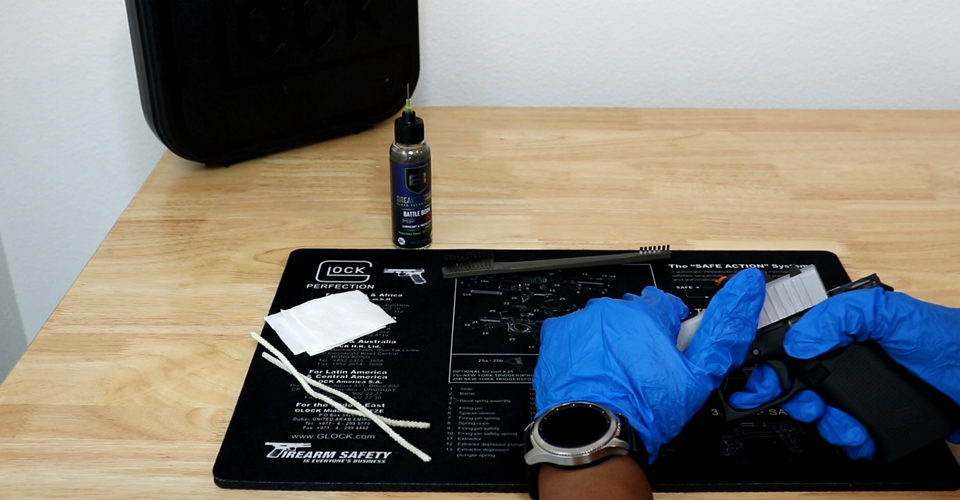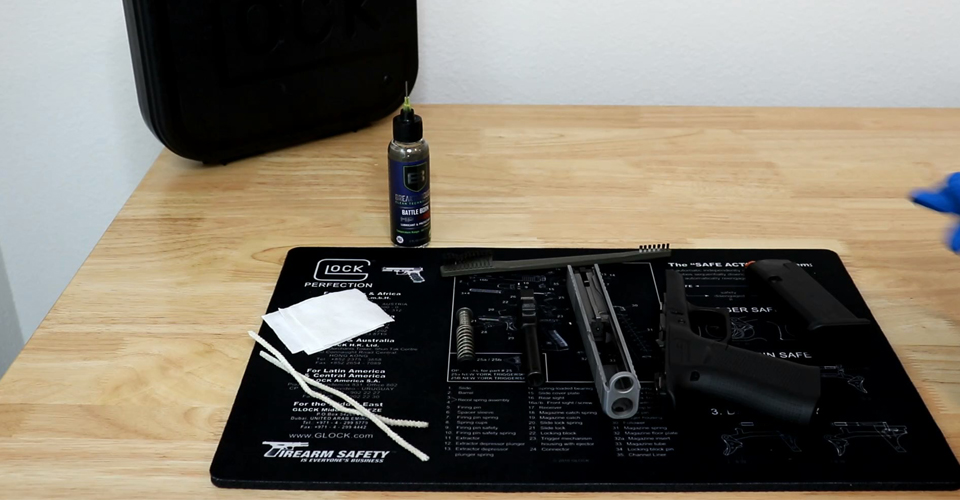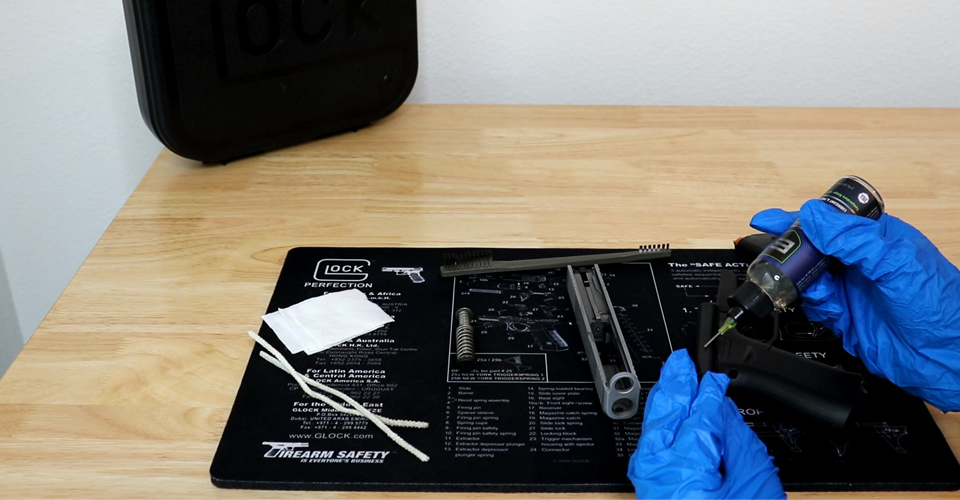Women’s Outdoor News and Avery Skipalis bring you a video about inspecting your firearm. Inspecting your firearm is another aspect of firearm ownership that’s often overlooked and viewed as a chore. In the second video of our series, we talked about the importance of firearm maintenance and listed a few things to which you should pay attention. Now we’re moving on to firearm inspection.
Sponsored by GLOCK
Now it’s time to inspect your firearm. Before you start this process, ensure that you’ve cleared the area of any ammunition and that you don’t have any live ammunition around where you’ll be inspecting your firearm. When you inspect your firearm, ensure that you’re located in a place that is well lit. Be sure to always wear gloves and eye protection. You want to make sure your eyes are protected just in case any of the springs pop out. Your next step is to disassemble your firearm and inspect it using the following acronym: BMWCLS.


(B) Broken: Ensure that nothing is broken or cracked on the firearm. You want to make sure that you inspect your slide, barrel and you locking block closely.
(M) Missing: Check that you’re not missing any parts to your firearm, such as springs or other small components.
(W) Worn: Inspect your firearm to verify that no parts show signs of excessive wear.
(C) Cleanliness: Is your firearm clean and serviceable?
(L) Lubrication: Does the firearm have proper lubrication? Are the metal-to-metal surfaces properly lubricated? Also, metal-to-metal surfaces should have a light coat of oil to prevent rust. You can refer to our last video for proper lubrication points.

(S) Spring Tension: Check all springs to make sure that they are not worn out and still have plenty of spring tension. This also includes your magazine springs; these tend to get weak after excessive use.
Inspecting your firearm after every time you fire it is often viewed as unrealistic and unnecessary. My advice to you is to get to know your firearm. Inspect it often and build good habits of maintenance and inspections. This could help you identify issues that could possibly lead to malfunctions down the road. Take care of your firearms so that they are able to perform when most critical, especially in a defensive situation.
Avery Skipalis is the owner of Skip’s Tactical Solutions, an organization that focuses on empowering women, men and children to make sure that no one else becomes a victim. She gained her firearms experience from the military where she’s been a military firearms instructor for 10.5 years. She’s also a certified NRA rifle and pistol instructor and Glock Advanced Armorer since 2015. She’s attended Sig Sauer Academy, FNH, Special Operations Command Armorers courses as well as multiple Advanced Shooting Schools across the United States. She resides in Florida with her husband and 2 kids. She’s currently serving in the United States Air Force and loves sharing her passion with others. She thinks it’s important that women also feel like they’re in control of their own safety. View all posts by Avery Skipalis